Professional Dredging for Pembroke Pines Canals & Intracoastal Waterways in South Florida (Gold Coast & Palm Beaches)
Professional Dredging for Pembroke Pines, FL Canals & Waterways
Serving Pembroke Pines waterfronts with specialized solutions for tidal/brackish canals and the Intracoastal Waterway (ICW). We efficiently remove hurricane sediment and address seawall toe buildup, managing complex dewatering logistics inherent to South Florida (Gold Coast & Palm Beaches) waterfronts to restore navigation and access.
Why Pembroke Pines Waterfronts Choose South Florida Dredging
Trusted expertise for tidal/brackish conditions and dense canal neighborhoods across the Gold Coast
- South Florida Focused Expertise: Every Pembroke Pines waterfront project receives specialized attention addressing tidal/brackish conditions, SFWMD C-canal network complexities, and South Florida Gold Coast regulatory requirements.
- Seawall Toe & Shoaling Expertise: Comprehensive services address near-shore canal shoaling, seawall toe clean-outs, and sediment buildup at boat slips and marina basins across the Intracoastal Waterway (ICW) corridor.
- Permit Navigation Support: In-depth familiarity with FDEP, SFWMD (South Florida Water Management District), and Pembroke Pines regulatory environment for streamlined permitting and compliance in manatee slow-zones.
- Access & Logistics: Successfully managing limited equipment access behind homes, narrow canal easements, and low bridge clearances common in Palm Beaches & Gold Coast waterfront HOAs.
Professional Dredging Services for Pembroke Pines Waterways
Florida Dredging brings production-grade dredging to Pembroke Pines’s canals and ICW-connected waterways, combining mechanical and hydraulic options for efficient sediment removal—including silt removal, muck removal, and sludge removal—to restore depth at docks, ramps, channels, and seawall lines. Our dredging contractors plan covers staging, access, dewatering logistics in dense areas, and compliant haul-off, ensuring your Pembroke Pines waterfront gets measurable results fast.
Beyond depth recovery, we support water quality outcomes with targeted aquatic vegetation management, algae control, circulation improvement in slow-moving canals, shoreline cleaning, debris removal, and ongoing maintenance programs tailored to Pembroke Pines’s tidal/brackish water needs, especially following a king tide or storm event.
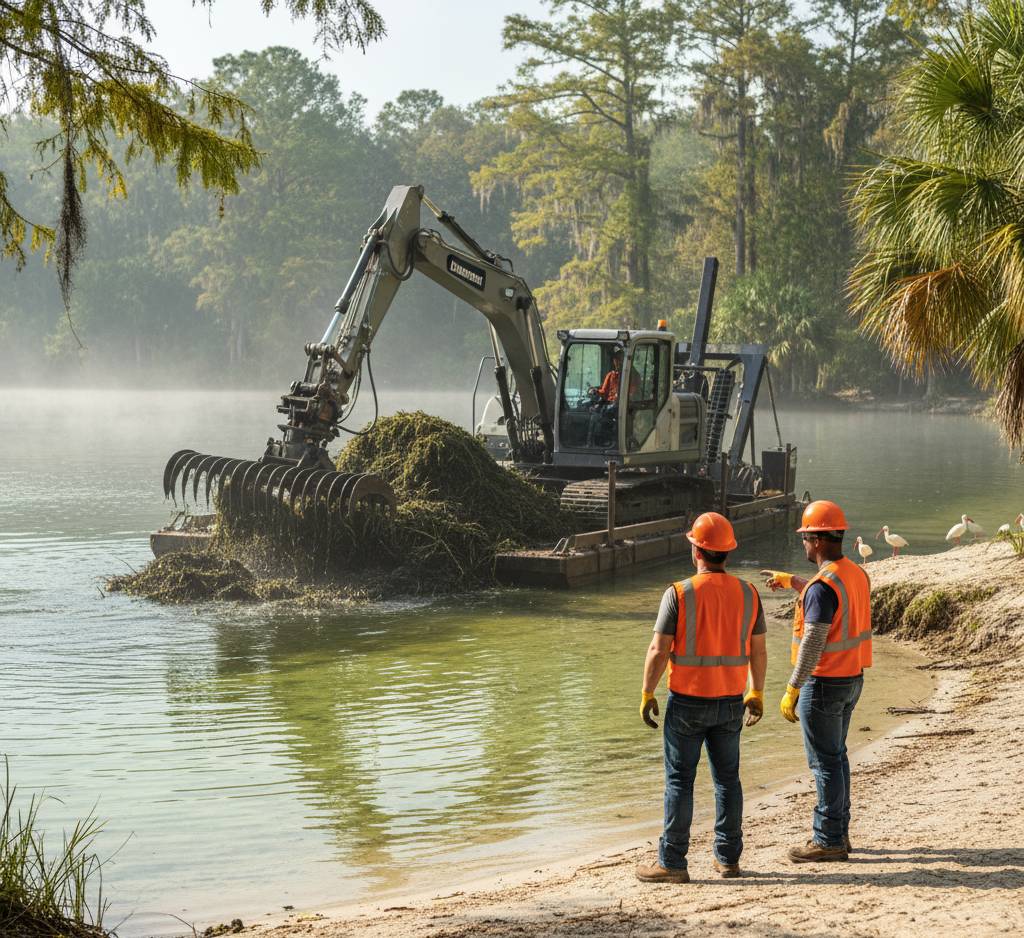
Key Dredging Outcomes for Pembroke Pines Waterfronts
- Restore depth at canal bends, condo docks, and marina basins
- Seawall toe clean-outs; lift/hoist approach depth recovery
- Programmatic sediment management: pumping out sediment, staging, dewatering, reuse/haul-off
- Predictable production tracking and windows around storm/king-tide cycles
- Flexible methods: mechanical dredging or hydraulic, matched to narrow canal constraints
- Circulation improvement for brackish canals; manageable regrowth plans
Expert Lake Dredging Services in Pembroke Pines, Florida
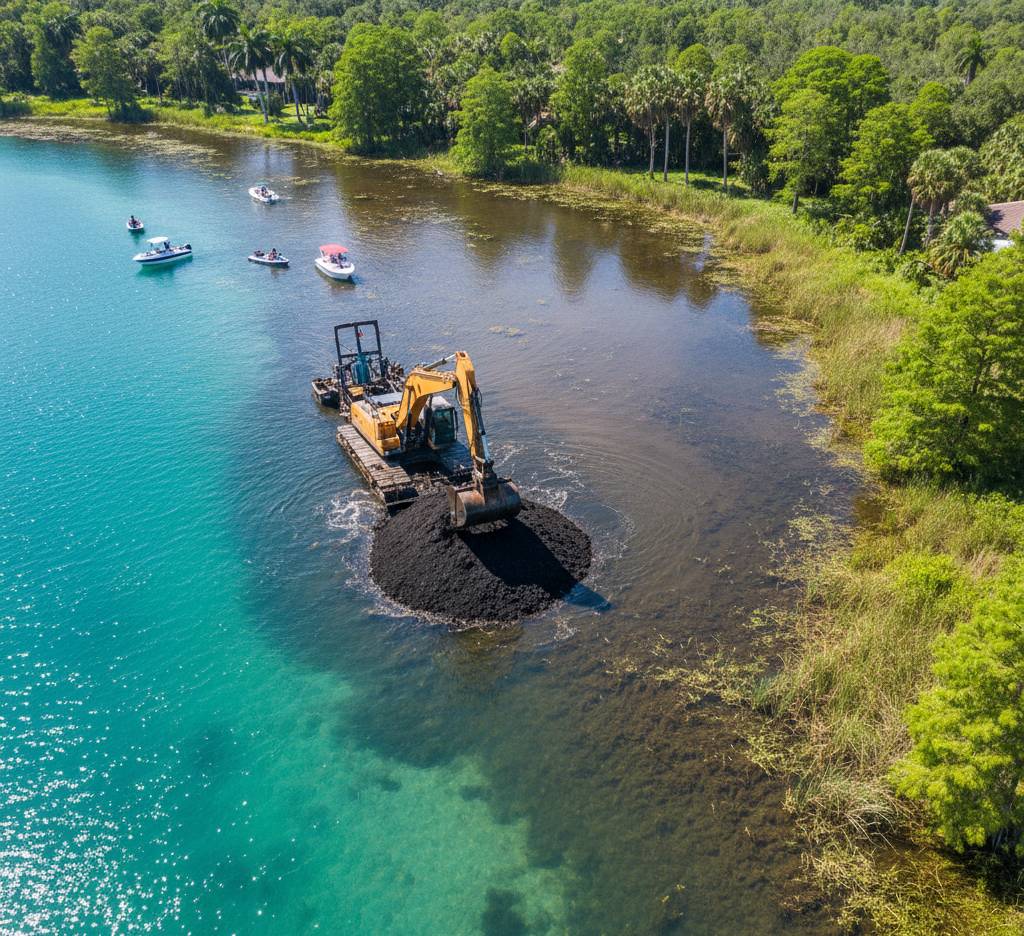
Professional Mechanical Dredging
Production excavation for sediment removal in Pembroke Pines lakes - ideal for near-shore silt removal, muck removal, and targeted lake desilting at docks, ramps, and tight coves. We clean out lake areas that limit boat access and quickly restore depth across Pembroke Pines.
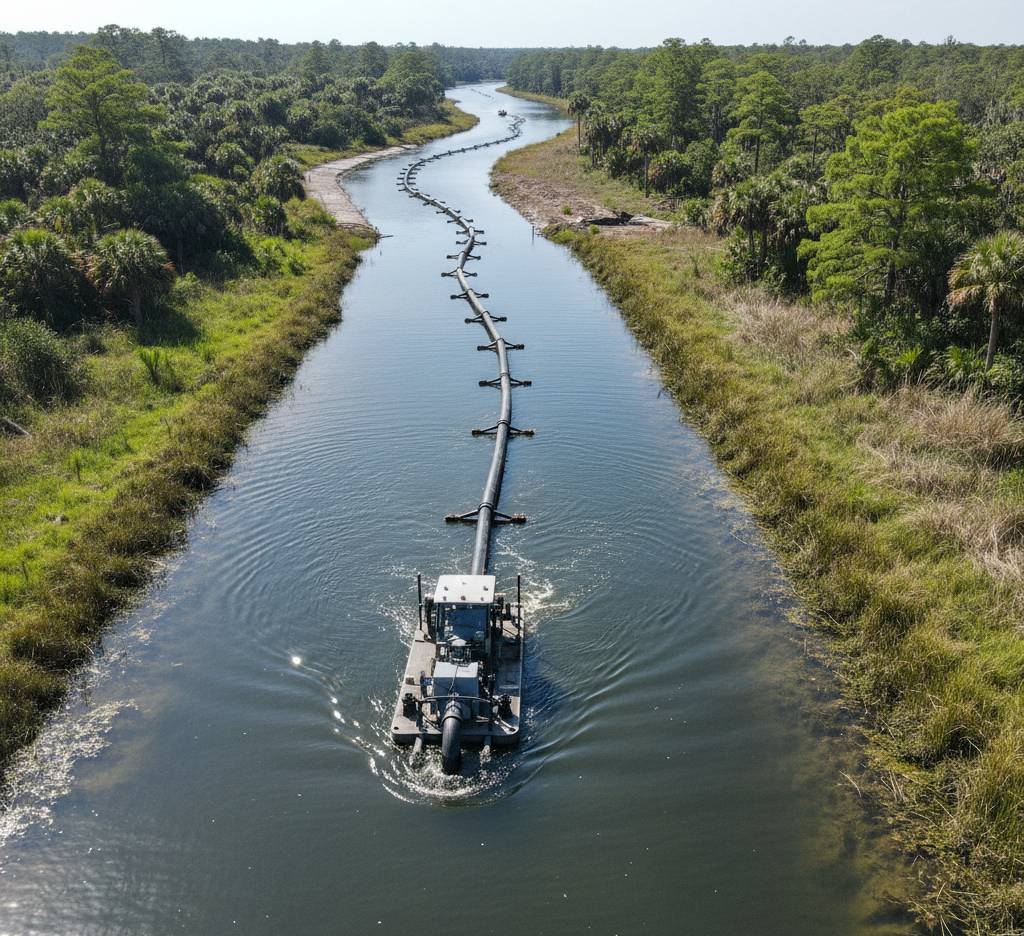
Hydraulic Sediment Removal
Continuous pumping out sediment for longer reaches and sensitive frontage in Pembroke Pines lakes. Great for channel straightaways and hard-to-reach coves, delivering steady sediment removal with a compact footprint and predictable daily yardage.
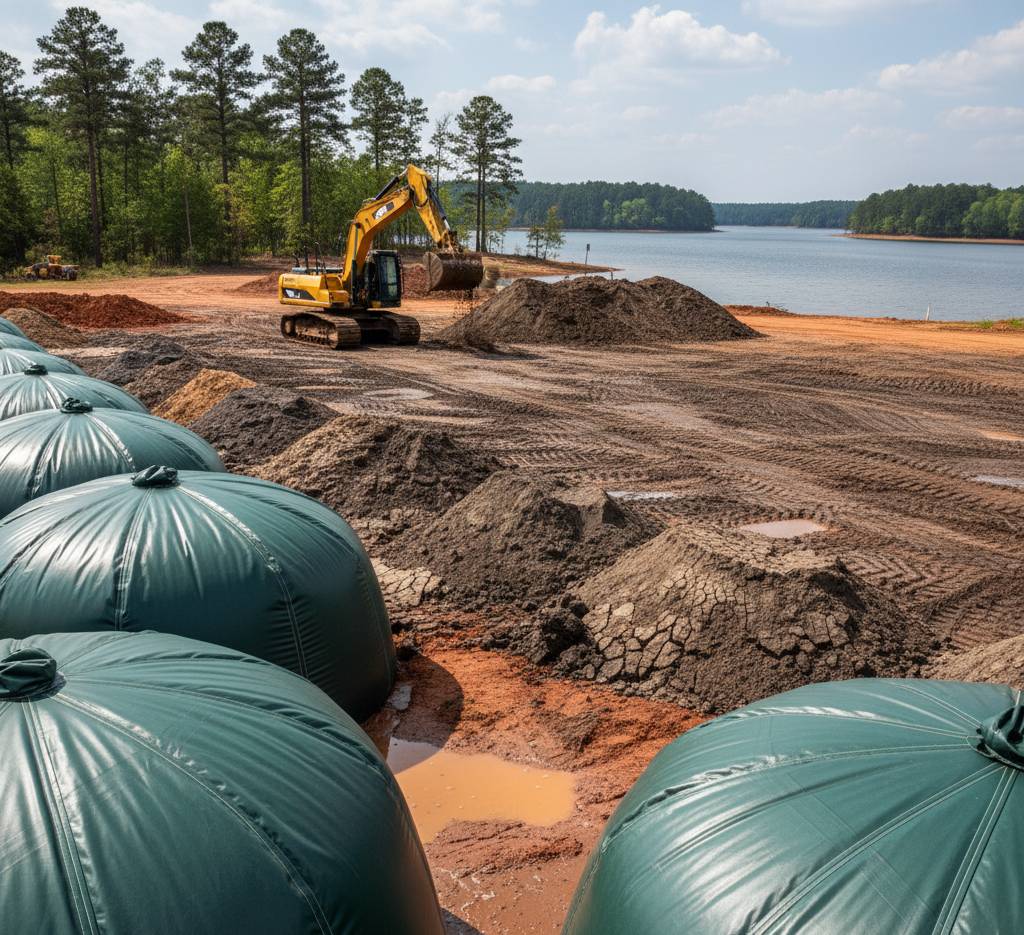
Comprehensive Sediment Management
Full-cycle sediment management for Pembroke Pines properties: volume targeting, access, dewatering, beneficial reuse, or approved haul-off. We align method to budget while maintaining Florida DEP compliance and production tempo.
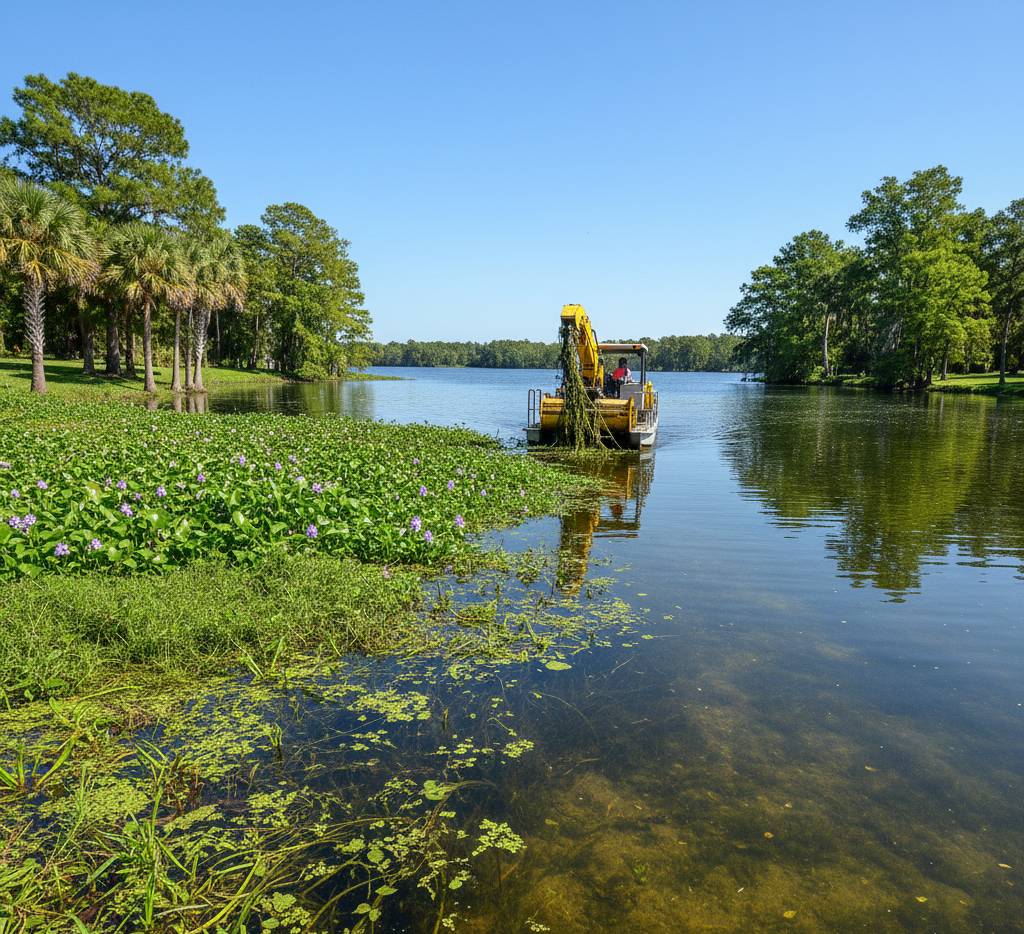
Lake Vegetation Management
Targeted aquatic vegetation removal with adjunct duckweed control, watermeal removal, and hydrilla control to protect gains after lake dredging in Pembroke Pines. Supports clarity, navigation, and habitat goals alongside water quality management.

Sediment Dewatering Solutions
Right-sized dewatering approaches for Pembroke Pines sites (geotextile tubes or pad drying) that keep sludge removal, desilting, and export efficient—critical to schedule and cost control for Pembroke Pines lake projects.
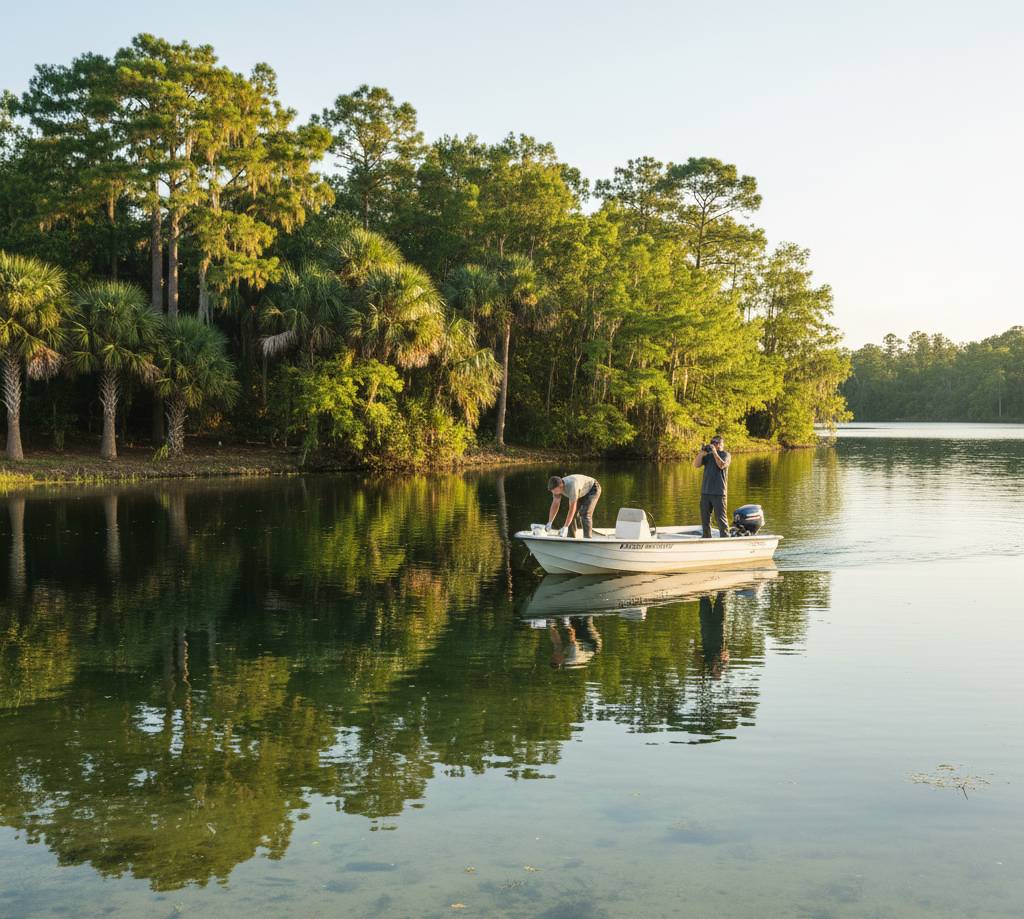
Continuous Lake Management
Post-project lake maintenance for Pembroke Pines properties: seasonal cove checks, small-scope clean out lake actions, inlet silt removal, and circulation improvement to slow re-siltation specific to Pembroke Pines lake conditions.
Ready to Restore Your Pembroke Pines Canal or Waterway?
Ready to move forward with dredging services for your Pembroke Pines property? As a leading expert in South Florida (Gold Coast & Palm Beaches), our team will review your project goals, provide a detailed timeline and cost estimate, and explain the best approach—whether mechanical dredging for seawall toes or hydraulic for deeper channels. You'll receive clear pricing and a step-by-step plan designed to restore depth and improve your Pembroke Pines waterfront access.
FAQ
Frequently Asked Questions About Pembroke Pines Waterway Dredging
How much does it cost to dredge lakes in Pembroke Pines?
Every dredging project in Pembroke Pines's canal/ICW system is unique. Costs generally range from $30–$100 per cubic yard. Key cost drivers in South Florida (Gold Coast & Palm Beaches) include difficult access in dense neighborhoods, the distance to approved spoils disposal sites, and the complexity of managing tidal/brackish sediment dewatering. Our team provides transparent estimates based on these site-specific factors.
For a baseline, removing 500 cubic yards is often used as a starting estimate for cost forecasting in Pembroke Pines.
How can I save money on dredging in Pembroke Pines?
In South Florida Gold Coast communities, the biggest expense is often trucking spoils offsite due to limited space for dewatering. Each truckload can cost $350–$450, depending on distance and disposal fees.
You can significantly reduce hauling costs if the excavated material can be safely reused on-site for landscaping or shoreline stabilization—a solution we often pursue for canal properties, pending local and SFWMD approval. We work to identify the most cost-effective and compliant options for Pembroke Pines property owners.
How do I know if my Pembroke Pines lake needs dredging?
There are several signs your Pembroke Pines canal or waterway may need dredging, especially in a tidal environment:
- Shallow water at your dock/boat lift, especially during low tide
- Visible seawall toe accumulation (sludge/muck)
- Boat props churning up silt/sediment easily
- Strong, brackish odors or excessive weed growth in slow-flow coves
- Navigation or access problems for vessels near the Intracoastal Waterway (ICW)
A bathymetric survey can confirm canal shoaling and sediment buildup to plan the most effective dredging in your Pembroke Pines waterfront.
Do I need permits to dredge my lake in Pembroke Pines?
In the South Florida (Gold Coast & Palm Beaches) region, yes. Permits are almost always required for dredging. This is typically managed by the Florida Department of Environmental Protection (DEP) and the South Florida Water Management District (SFWMD), especially within their vast C-canal network.
Our team specializes in navigating the complex permitting process for Pembroke Pines waterfront HOAs and private owners, ensuring all work complies with state environmental regulations and local ordinances, including required consideration for manatee slow-zones and seagrass beds.
Why should I dredge my Pembroke Pines lake?
In Pembroke Pines’s coastal areas, sediment buildup from runoff, decaying vegetation, and hurricane season impacts can quickly fill in canals and ICW approaches. Left unchecked, this leads to:
- Loss of usable depth for boat dockage, lifts, and navigation
- Seawall toe instability and buildup of unsightly muck/sludge
- Increased turbidity and water quality degradation from nutrient-rich sediment
- A higher risk of brackish staining and foul odors near the shore
Dredging restores access, improves water clarity, and protects your Pembroke Pines property’s investment by reversing the effects of natural siltation.
How long does a typical dredging project take in Pembroke Pines?
Project timelines for South Florida (Gold Coast & Palm Beaches) properties depend heavily on the sediment volume, method (mechanical or hydraulic), and critically, the ease of dewatering and haul-off. A typical canal clean-out might take 1–3 weeks once permits are secured, but larger ICW basin projects can take longer.
We provide detailed timelines during the consultation phase, factoring in seasonal constraints like hurricane season and specific neighborhood access windows to keep Pembroke Pines property owners fully updated.
Serving Florida Lakes & Communities
We provide dedicated dredging services across Florida’s key regions — from Miami’s canal systems to the Panhandle’s emerald waterways — with project mobilization planned around seasonal water levels and site conditions.
South Florida (Gold Coast & Palm Beaches)
From Miami to West Palm Beach, we serve the Gold Coast’s lakes, canals, and waterfront communities — offering sediment removal, shoreline restoration, and canal dredging for both residential and commercial properties.
Tampa Bay & Nature Coast
From Tampa Bay to Spring Hill, this region features brackish estuaries, golf course ponds, and community lakes — ideal for hydraulic or mechanical dredging projects that restore depth and water flow.
Central Florida & Space–Treasure Coasts
From Orlando’s inland lakes to the Indian River Lagoon and Treasure Coast canals, this corridor is home to master-planned communities, HOA lakes, and waterway systems requiring ongoing maintenance dredging.
Southwest Florida
Serving the Gulf Coast from Fort Myers to North Port — dredging residential canals, private ponds, and marina basins across Lee, Collier, and Charlotte counties.
North Florida & Panhandle
From Jacksonville’s St. Johns River to Pensacola Bay, we serve lakes, rivers, and coastal systems throughout North Florida and the Emerald Coast, including Gainesville, Ocala, and Tallahassee.